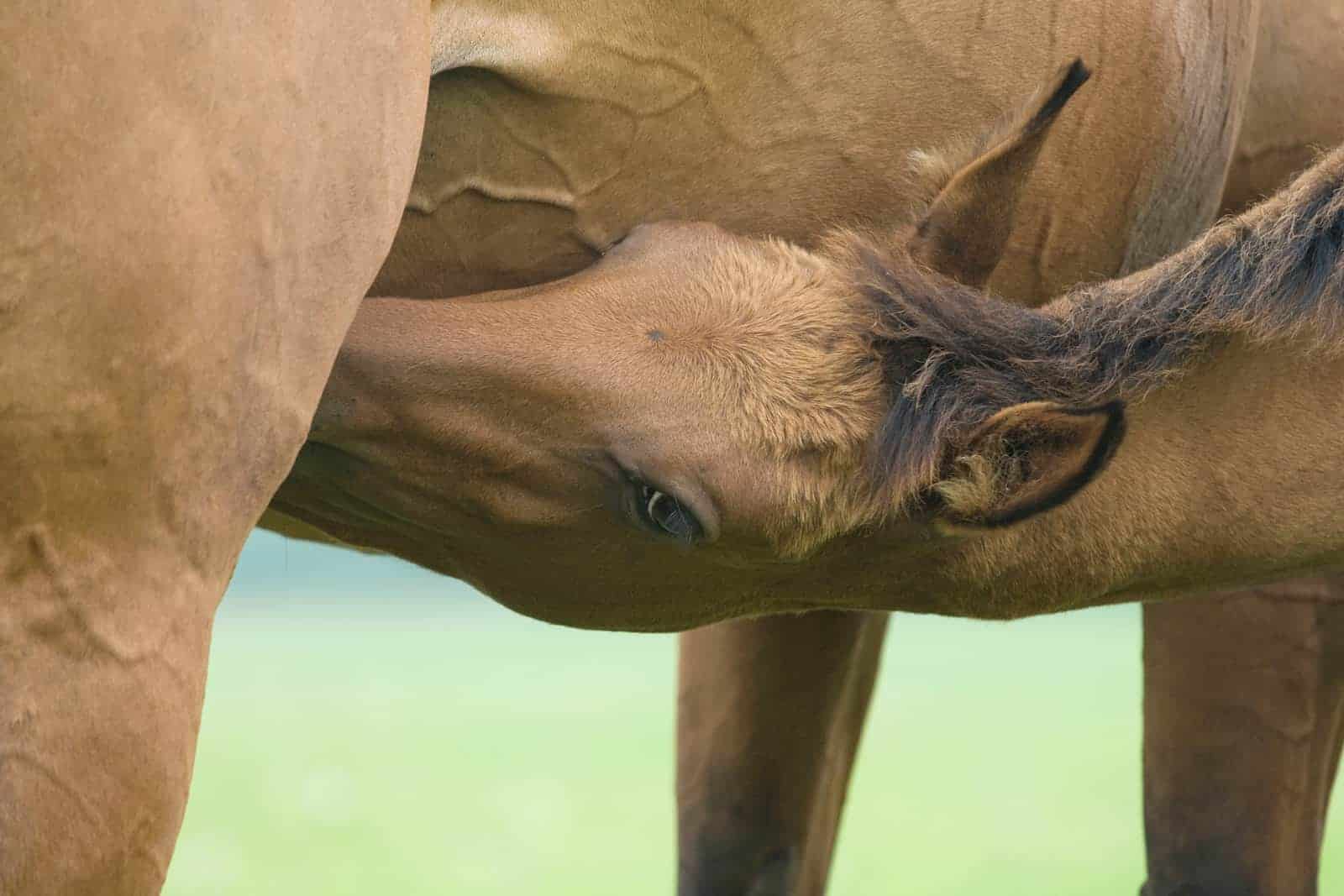5 Tips for Feeding Foals

Feeding foals properly is critical for adequate growth and development. A foal’s main source of nutrients is his dam’s milk, but in some cases this alone won’t meet his high nutritional demands. What should you do?
Here are five things to consider about feeding foals:
1. Suckling Behavior
Newborn foals generally begin nursing from the mare within two hours of birth. By one day of age, foals can suckle up to 10 times per hour. Study results have shown that foals older than one day can consume around 30 pounds of milk per day (slightly more than 3 gallons).
2. Colostrum
Ensuring your foal ingests immunoglobulin (antibody)-rich colostrum, which is vital to boost his immune system, is of utmost importance. Mare’s milk is richest in immunoglobulins immediately after birth and begins to decrease rapidly in concentration by four to eight hours post-foaling. Additionally, by the time he’s 24 hours old, the foal is no longer able to absorb these vital components.
Veterinarians can perform a simple blood test to ensure the foal has consumed adequate colostrum. If the mare does not produce adequate colostrum, if the foal fails to suckle soon after birth, or if the foal’s system isn’t able to absorb the colostrum (this can occur in premature foals and those with a hypoxic gastrointestinal injury, inflammatory injury, or other illness), contact your veterinarian. He or she will be able to provide the important immunoglobulins either via frozen colostrum, colostrum replacer, or intravenous administration of fresh plasma, frozen hyperimmune plasma, or immunoglobin concentrates.
3. Mare’s Milk
The nutrient concentration of a mare’s milk varies based on several factors, including the mare’s nutritional status. Milk’s energy, protein, fat, and mineral content are highest within the first month of the foal’s birth and decrease thereafter. For example, milk’s energy content drops from 263 kilocalories (kcal) per pound in the first month to about 228 kcal per pound at five months post-foaling.
4. Creep Feeding
Foals will actively seek out solid food within the first few days of life, and many will try to consume their dams’ feed (whether Mom is willing to share is another story). Hence, most breeders offer foals a creep feed, which is a milk-based pellet fed free-choice in a feeder only foals can access. These contain high-quality sources of energy, amino acids, and balanced minerals, particularly calcium and phosphorus. Creep feeding’s advantages include higher average daily gain and decreased weaning stress.
5. Orphans
An orphan’s nutritional needs depend on several factors, including the foal’s age and whether a nurse mare is available. Newborn orphans must consume colostrum like any other foal, but they afterwards they can immediately transition to either a nurse mare or a commercially available mare’s milk replacer fed via bucket or bottle. Orphaned foals can be weaned from milk at around 10 to 12 weeks of age to a quality forage source and creep feed.
Take-Home Message
Colostrum and milk should provide the foal with necessary nutrients and immunoglobulins from birth to weaning. Breeders can use creep feed to ensure the foal is receiving adequate nutrition daily and to help decrease weaning stress. When faced with an orphaned or rejected foal, a nurse mare or mare’s milk replacer can help meet the foal’s nutritional needs.

Related Articles
Stay on top of the most recent Horse Health news with


















